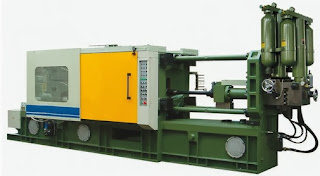Utilizing
the Aluminum Casting Machines to change
an iron forging can lead to decreasing component
tonnage by half. That's the reason auto producers can be searching the areas where they might replace iron
components with Aluminum Components Machining
elements. Most auto producers in
China favor alloys regarding aluminum specially the A 300 sequence which has a
mixture of silicon and a small amount of magnesium.
The
magnesium gives power. An essential
aspect of Aluminum Components Machining
and their admixture is that
compared with ferrous alloys that display
unlimited durability, the
weariness power of aluminum
forge falls with increase in quantity of stress cycles this must be taken into
consideration while creating its
parts.
For
getting top quality castings China a number of processes are adopted. While casting long term
molds safeguards are taken to assure it gets needed cooling and
vacuum pressure can also be implemented
to make sure correct flow and lessen penetrable. Aluminum is among the
few metals which can be cast by all techniques
of forging.
Die casting
Aluminum
alloys can be more applied in die casting than alloys of any steel. Aluminum Casting Machines
China
is usually appropriate for
production for smaller parts.
But when costly manufacturing equipment can be used the castings weigh up 5kg - 50kg. Cost
effectiveness can be acquired only by big scale production. With die casting
you'll be able to have close threshold and fine completing surface. Die
castings are generally manufactured
by injecting melted metal into steel molds under substantial stress. Quick injecting and quick
solidification under excessive force make
a good grain surface that brings to
having finest wear and fatigue attributes.
Irreversible
die casting
It
is suitable for big scale production. Their optimum weight is 10kg. But where large cost machinery and equipment are utilized the weight
associated with casting may increase to 50kg. Permanent mold casting possess low flowing rate but metal molds congeal quickly, mechanical properties regarding permanent mold castings may perhaps be further bettered through heat treatment.
Sand casting
Sand
casting is usually a casting of
the mildew with sand. In typical fine sand casting, the mold is
created around a style by forcing sand mixed together with a bonding agent upon the design. Then the layout
is taken away which leaves the cavity for forging. Melted alloy is poured to the mold and
following its solidification the mold is broken to get rid of casting.
Lost
foam casting is called due to
the methods used with applying the method. In lost foam
method a copy of the product to
be cast can be built using foam coated with ceramics which becomes evaporated. Then this filled
by molten aluminum through a
later stage of the casting process.








No comments:
Post a Comment